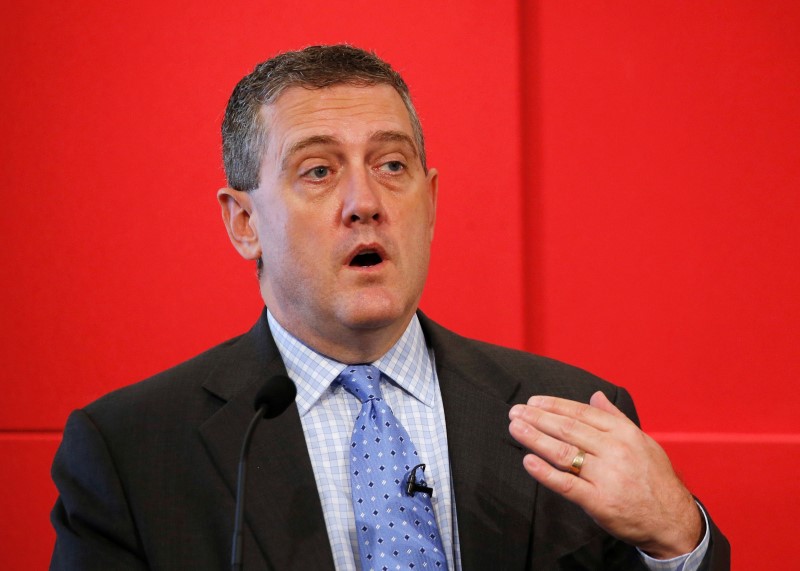ST. LOUIS (Reuters) - With the U.S. Federal Reserve perhaps edging towards a September rate increase, St. Louis Federal Reserve president James Bullard is sticking with his view that a single move is all that is needed for a long time to come, and it does not have to happen anytime soon.
Bullard said on Wednesday he did not put much weight on whether the central bank acts in September or even at all this year, given that he now thinks a single hike is all that is needed to maintain unemployment and inflation rates near the Fed's target levels.
"It does not matter much when we move," Bullard said, though he would prefer it come after "good news" such as evidence economic growth is rebounding.
"I think you would want to see at least a modest rebound in growth or be confident that one was coming," he told reporters after speaking at an asset management conference at the Washington University in St. Louis.
Bullard's colleagues this week appeared to set the stage for a September hike. Fed minutes from the central bank's July meeting, released on Wednesday, showed policymakers split on the timing for the next move. That would be the second rate hike in the Fed's agonizingly slow process of "normalizing" rates following the 2007 to 2009 financial crisis.
The Fed's struggle to follow through on its normalization plan, Bullard feels, has confused markets and prompted him to lay out a new framework for analyzing policy - one that accepts the current low-growth, low-inflation economy as a durable state of affairs.
In a presentation to the conference, he said there was no reason yet to conclude the U.S. had yet shifted from the low-growth, low-inflation "regime" that makes low rates appropriate for what he has termed the "foreseeable future" - perhaps two and a half years. Until such a regime change occurs, Bullard has said he feels there is no reason to raise key interest rates more than once, to 63 basis points, one quarter-point increase above their current level.

"Risks associated with this projected policy rate are likely to the upside," Bullard said in his prepared remarks. But until risks shift the U.S. to a new path, he said there is no reason to think rates should move much higher.